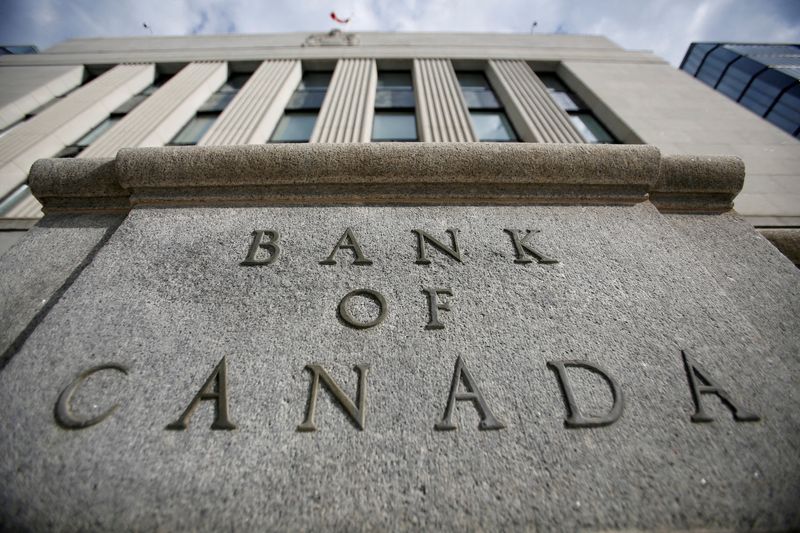By Steve Scherer and David Ljunggren
OTTAWA (Reuters) - The Bank of Canada lifted rates after a four-month pause because of surprisingly strong household spending and high core inflation, a senior official said on Thursday, but gave no clues as to whether another hike was coming soon.
The central bank lifted its overnight rate to a 22-year high of 4.75% on Wednesday, declaring monetary policy was not sufficiently restrictive. Markets and analysts forecast another increase in July as the bank struggles with inflation far above its 2% target.
Bank of Canada Deputy Governor Paul Beaudry singled out unexpectedly strong household spending, a rebound in the housing market, a tight labor market, and sticky core inflation as the main factors behind the latest move.
"The bottom line is there appears to be more momentum in demand than we expected," he told business executives in Victoria, British Colombia.
"We agreed the likelihood that total inflation could get stuck well above the 2% target has increased."
Speaking to reporters later, he side-stepped questions about a hike next month, saying nothing had been determined.
"We're going to take one decision as time ... we'll be looking at the information that comes out, the new data that comes out," he said.
Money markets see a 64% chance of another rate hike in July and have fully priced in further tightening by September.
"The Bank of Canada probably wants to wait until it has a new forecast in hand before providing any specific guidance about where rates are headed," Royce Mendes, head of macro strategy at Desjardins Group, said in a note.
The bank will release new economic forecasts at its next rate announcement on July 12.
The Canadian dollar was trading 0.1% higher at 1.3356 to the greenback, or 74.87 U.S. cents.
The central bank had been on hold since January to assess the impact of previous hikes after raising borrowing costs eight times since March 2022 to a 15-year high of 4.50% - the fastest tightening cycle in the bank's history.
In April, annual inflation accelerated for the first time in 10 months, rising to 4.4%. First-quarter GDP rose 3.1% - versus the 2.3% forecast by the BoC - and in April the economy is seen expanding 0.2%.
Beaudry predicted headline inflation would slow to 3% this summer. He expressed concern about measures of core inflation which he said "seem to have lost their downward momentum".
Contrary to expectations, demand for services was sharply higher in the first quarter, and demand for goods jumped too.
Beaudry also warned consumers that in the medium- to long-term future, interest rates were likely to remain higher than Canadians had been used to before the COVID-19 pandemic.

Structural factors within the economy that had been keeping rates lower were shifting, he said. For example, Canadians who had saved more as they approach retirement do not put as much money away when they stop working.
There is a greater risk of higher rates in the future, so "it's important to think ahead", Beaudry said, and "be better prepared in the eventuality that we have entered a new era of structurally higher interest rates".